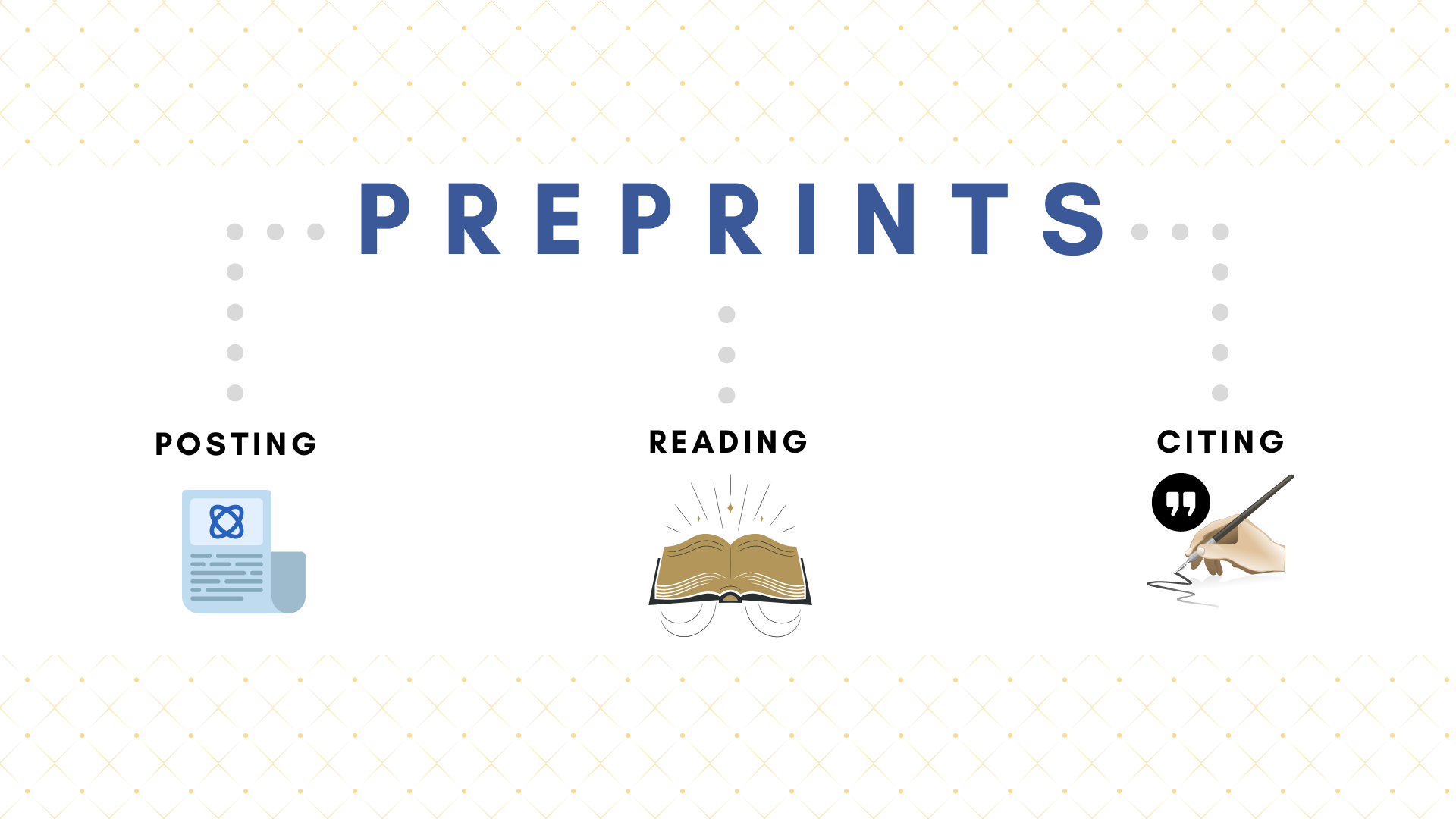
Preprints 1: Speed, Readership, and Citation Advantage
This blog post will briefly introduce preprints and their benefits. In the next post, the concerns of preprints and implications to authors and readers will be discussed. Stay tuned!
Introduction
Preprint is a version of a scholarly paper preceding formal peer review. Since the launch of arXiv (https://arxiv.org/), the very first preprint server used by physicists and mathematicians in 1991, an abundance of preprints servers have been developed for different subjects, for example, biorXiv (https://www.biorxiv.org/), medRxiv (https://www.medrxiv.org/), SSRN (Social Science Research Network, https://www.ssrn.com/en/) and more. Such servers aim to promote dissemination of unpublished research findings among academics (da Silva, 2018). (If you are interested in a list of preprint servers, read this guide: https://libguides.lib.hku.hk/preprint.) From 1991 to 2019, the number of preprints surged from 3,000 to around 227,000 (Xie et al., 2021). A drastic increase of preprints was also seen after the outbreak of Coronavirus disease 2019 (COVID-19) from December 2019—because of an overwhelming scientific production about the pandemic, some journals encouraged authors to distribute their findings through preprint servers to speed-up information dissemination (Añazco et al., 2021; Kaiser, 2017).

[Image curtesy of いらすとや]
Benefits of preprints
Preprints are said to be accelerating the scholarly communication and reaching larger audience (Kaiser, 2017). The number of citations of articles with preprints is also higher than that of articles not available as preprints (Fraser et al., 2020; Xie et al., 2021).
A. Speed
Preprints facilitates more efficient scholarly communication by disseminating research findings more rapidly with the aid of technologies. In a study on BioRxiv, the median delay time between submission of a preprint to preprint servers and publication in a journal was found to be around 5 months (Fraser et al., 2020). Another study on preprints submitted to arXiv revealed that the mean and median publication delay (the time lag between the date of being first submitted to arXiv and the date of being published online in a journal) of preprints is 16.13 months and 13 months, respectively (see Figure 1) (Wang et al., 2020). Preprints enable scholars to bypass the publication delay due to peer-review process, and to communicate research findings in a faster way.

In a recent study with a sample of 19 preprint servers for various subjects, preprints were found to reach an audience 14 months earlier on average than a peer-reviewed counterpart (Xie et al., 2021). In a study on arXiv preprints and non-OA papers in Mathematics, it was found that 39.48 % articles had an Altmetric ‘first seen date’ earlier than journal online date (Wang et al., 2020). Altmetric ‘first seen date’ was the date on which Altmetric.com captures the first event for a research output. It was used as an indicator of the speed of discoverability of publications in social media.

[Image curtesy of いらすとや]
B. Reach
While subscription databases target researchers working in organizations such as universities, preprints are green open-access (OA). Preprints can reach the interested general public outside academia, who may not be able to access to the final journal versions behind the paywall. In a study on Mathematics arXiv preprints, it was found that preprints were more likely to be mentioned in social media than the “more official” journals versions (Wang et al., 2020). Over 22.7 % of preprints were tweeted with arXiv IDs; 4.70 % of them were tweeted with DOIs; but only 2.37 % of non-OA papers were mentioned on Twitter. This might be because the audience in Twitter were more heterogeneous with both experts and general public, so publications with a link to a green open-access preprint version might gain more potential readers.

[Image curtesy of いらすとや]
C. Impact
When preprints provide early view and open access, in addition to a wider readership, they enjoy a citation advantage. In a study on preprints across different subjects, preprints were found to associate with 5 times more citations compared with a non-preprint counterpart (see Figure 2) (Xie et al., 2021). Another study revealed that at 36 months post-publication, articles deposited to bioRxiv cumulatively received 1.62 times more citations than those not deposited (Fraser et al., 2020).

Apart from traditional citation counts, the authors also analysed altimetric data, and found that as compared to non-deposited articles, bioRxiv-deposited articles received more mentions in blog posts (46%), Wikipedia (44%), Twitter (40%), Mendeley (25%), and mainstream media articles (16%). (Altmetrics are metrics for measuring diverse online activities such as social media mentions, aiming to give new insights to the impact of research outputs that is invisible through traditional citation-based indicators. If you are interested in Altmetrics, read this guide: https://libguides.lib.hku.hk/c.php?g=945929&p=6852303#s-lib-ctab-21971075-0)

[Image curtesy of いらすとや]
To conclude, preprints brings benefits including enabling research findings to become available earlier, and reach a wider audience. They also enjoy a citation advantage.
The next post will be on concerns on preprints and some implications to readers and authors. Stay tuned!
References
Añazco, D., Nicolalde, B., Espinosa, I., Camacho, J., Mushtaq, M., Gimenez, J., & Teran, E. (2021). Publication rate and citation counts for preprints released during the COVID-19 pandemic: the good, the bad and the ugly. PeerJ, 9, e10927. https://doi.org/10.7717/peerj.10927
da Silva, J. A. T. (2018). The preprint debate: What are the issues? Medical Journal Armed Forces India, 74(2), 162-164. https://doi.org/https://doi.org/10.1016/j.mjafi.2017.08.002
Fraser, N., Momeni, F., Mayr, P., & Peters, I. (2020). The relationship between bioRxiv preprints, citations and altmetrics. Quantitative Science Studies, 1(2), 618-638. https://doi.org/10.1162/qss_a_00043
Kaiser, J. (2017). The preprint dilemma. Science, 357(6358), 1344-1349. https://doi.org/10.1126/science.357.6358.1344
Wang, Z., Chen, Y., & Glänzel, W. (2020). Preprints as accelerator of scholarly communication: An empirical analysis in Mathematics. Journal of Informetrics, 14(4), 101097. https://doi.org/10.1016/j.joi.2020.101097
Xie, B., Shen, Z., & Wang, K. (2021). Is preprint the future of science? A thirty year journey of online preprint services. arXiv e-prints, arXiv:2102.09066. https://ui.adsabs.harvard.edu/abs/2021arXiv210209066X


